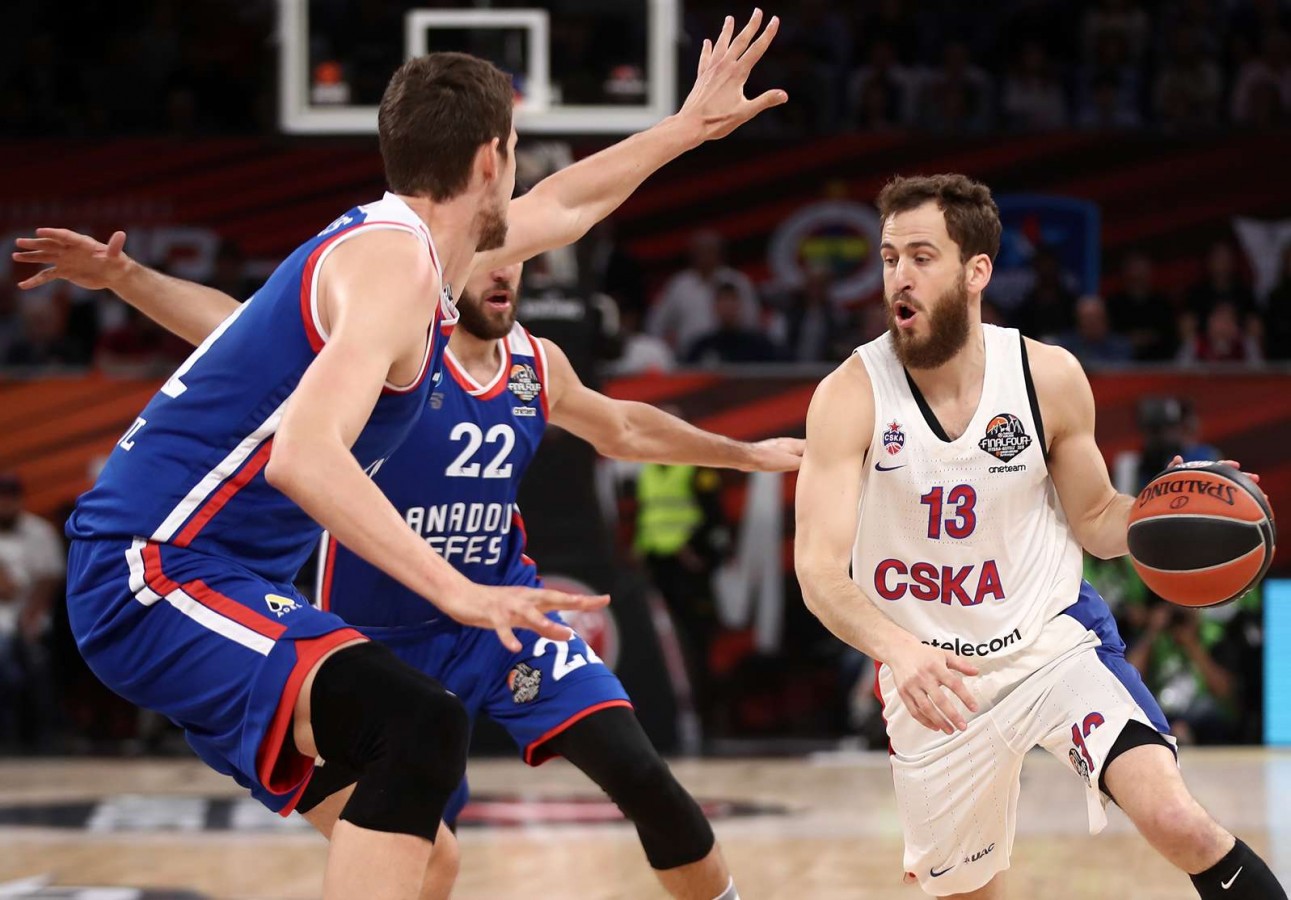Triangle Offense Basketball: Positions, Entries, and Strategic Breakdown

Triangle offense basketball is one of the most legendary offensive systems in the game. Known for its strategic ball movement, spacing, and teamwork, this system has helped teams like the Chicago Bulls and Los Angeles Lakers dominate the NBA. But what exactly is the triangle offense, and why did some of the greatest coaches and players rely on it?
In this article, we’ll break down the history of the triangle offense, how it works, its advantages and disadvantages, and the key positions and entry plays that make it effective. Understanding this offense will give you a deeper appreciation for the game. Let’s check it out!
What Is the Triangle Offense in Basketball?
The Triangle Offense is a strategic offensive system in basketball designed to create spacing, ball movement, and high-percentage scoring opportunities. It gets its name from the triangle formation that three players set up on one side of the court, making it easier to pass, cut, and find open shots.
At its core, this offense is all about teamwork and smart decision-making. Instead of relying on one superstar to score, the Triangle Offense allows all five players to be involved, making it unpredictable and tough to defend.
History of the Triangle Offense
The Triangle Offense was first created by Coach Sam Barry at the University of Southern California (USC). His former player, Coach Tex Winter, later refined and expanded the system while coaching at Kansas State University.
Winter’s deep understanding of the offense came from learning directly under Barry, allowing him to perfect its principles. The Triangle Offense gained widespread fame when Coach Phil Jackson and Coach Tex Winter implemented it with the Chicago Bulls in the 1990s.
Led by Michael Jordan, Scottie Pippen, and later Dennis Rodman and Toni Kukoč, the Bulls used the system to win six NBA championships (1991, 1992, 1993, 1996, 1997, and 1998).
Jackson and Winter later brought the Triangle Offense to the Los Angeles Lakers, where it helped Shaquille O’Neal and Kobe Bryant secure a three-peat (2000, 2001, 2002).
The system continued to prove its effectiveness when the Lakers won back-to-back titles in 2009 and 2010, this time with Kobe Bryant and Pau Gasol leading the team. Even in 2009, Tex Winter was still involved as a consultant, showing the long-lasting impact of his offensive philosophy.
Advantages of the Triangle Offense
The Triangle Offense became legendary for a reason. It’s a system that promotes teamwork, spacing, and high-percentage shots. Here are some key advantages that made it so successful:
1. Positionless Offense
Unlike traditional offensive sets, the Triangle Offense allows all five players to be interchangeable.
While the center usually plays in the low post, they can rotate out, helping players develop into more well-rounded and versatile athletes.
2. Continuity Offense
This system never stops until a good shot opportunity appears. Unlike set plays that have a fixed ending, the Triangle Offense keeps flowing naturally, making it harder for defenses to predict and stop.
3. Develops Basketball IQ
Players must constantly read the defense, make smart decisions, and adjust their positioning based on their teammates. This helps improve basketball IQ, making players more adaptable and effective on the court.
4. Involves All Players
No single player dominates the ball for too long. The offense requires constant ball movement, ensuring that every player stays engaged and contributes to the team’s success, even when they aren’t holding the ball.
Disadvantages of the Triangle Offense
While the Triangle Offense has many advantages, it also comes with some challenges. This system requires patience, high basketball IQ, and strong teamwork, which can make it difficult for some teams to execute effectively. Let’s take a look at some of the key disadvantages of this legendary offensive system:
1. Requires High Basketball IQ Players
Players must quickly read the defense and make smart decisions on the fly. While the system helps develop basketball IQ, it’s tough to run successfully without players who already have a good understanding of the game.
2. Players Must Memorize the Offense
This offense involves many specific actions and reactions. Every decision leads to a chain of movements that all players must know. This makes it difficult for youth or inexperienced teams who may struggle to remember all the options.
3. Requires a High Level of Fundamentals
The Triangle Offense depends on precise cuts, crisp passes, and strong individual skills. If players lack the ability to fake, change speed, or attack defenders one-on-one, the system won’t be as effective.
4. Coaches Must Give Up Control
Unlike structured set plays where coaches dictate every movement, the Triangle Offense puts decision-making in the hands of the players. Some coaches may find it challenging to let go of control and trust their players to read and react to the defense.
Triangle Offense Positions
The Triangle Offense is built around spacing, movement, and teamwork, with each player having a specific role to keep the system flowing smoothly. While all five positions are interchangeable, here’s a basic breakdown of where players usually start:
A. Corner
This player stands in the ball-side corner, often the point guard. They need to be a good shooter and capable of creating shots off the dribble when necessary.
B. Trigger
Positioned on the wing, this player controls the flow of the offense. The pass they make from here dictates the next movement, so it's best to have a smart decision-maker in this spot.
C. Post
Located on the high side of the low block, directly between the trigger and the basket. This player should be a good passer and strong finisher, creating scoring opportunities in one-on-one situations.
D. Trail
Positioned at the top of the key, this is usually the other guard. They should be able to shoot from outside, cut effectively, and create plays off the dribble.
E. Opposite
This player stays near the weak-side mid-post, often another big man. They should be versatile enough to switch positions and contribute to rebounding and spacing.
Entries Into the Triangle Offense
Before the Triangle Offense can fully take shape, the team needs to enter into the offense. This means getting players into their positions and setting up the first pass. Here are some common ways to initiate the Triangle Offense:
A. Inside Cut
The most common and quickest way to start the triangle offense. The point guard (1) passes to the wing (2) and then cuts inside between the wing (2) and post (5) to the corner.
The post (5) moves higher on the low block, while the other players adjust to form the triangle.
B. Outside Cut
Instead of cutting inside, 1 cuts above 2 to the corner. This is useful if 2 catches the ball far from the three-point line or can make an immediate pass to 5 in the post. The rest of the players shift accordingly to maintain spacing.
C. UCLA Cut
A screening action where 5 sets a screen for 1 at the ball-side elbow. 1 passes to 2 and cuts toward the basket, looking for a quick pass and layup. If no pass is available, 1 moves to the corner, and 5 resets in the low post.
D. Dribble Entry
If 1 can’t make the pass to the wing, they can dribble down to the trigger spot, effectively swapping roles with 2, who moves to the corner. This entry is useful when defenders deny passing lanes.
E. Weakside Entry
A quick ball reversal to confuse the defense. Instead of passing to the wing, 1 passes to 3 on the opposite side, then 4 steps out to become the new trigger. The rest of the team shifts into position, creating the triangle on the weak side.
F. Post Pop Entry
Instead of staying inside, 5 pops out to the corner after the pass from 1 to 2. Another player, such as 1, 4, or 3, then cuts inside to take the low post position.
This entry works well if 5 is a strong outside shooter or if the team wants to pull the opposing post defender away from the rim.
G. Post Screen Entry
A screening action between the post players. 5 sets a screen for 4, allowing 4 to cut inside and establish a low post position. The rest of the team shifts, ensuring spacing and passing options remain open.
Get Your Team Scoring Efficiently!
The Triangle Offense in basketball is a legendary system that has led teams to multiple championships. While it may not be as dominant in today’s game, it remains a powerful tool for teams that emphasize strategy, teamwork, and high basketball IQ.
Want to take your basketball skills to the next level? At Rockstar Academy, our Basketball Program is designed to help players of all skill levels excel, whether you're learning the fundamentals of refining advanced techniques.
Our coaching focuses on key positions, including the point guard role, where you'll develop leadership, ball-handling, and playmaking skills essential for running the offense.
As part of our Sports & Performing Arts Academy, we combine athletic training with a holistic approach to ensure you're prepared for both competitive and recreational play. Plus, you’ll have the chance to compete in Elite Championships and RockOlympics, challenging yourself against top-tier players.
Interested in giving it a try? We offer a free trial of the Basketball Program, so you can experience all the training and excitement firsthand before committing. Sign up today and take the first step towards elevating your game!
FAQ
What is a triangle offense in basketball?
The triangle offense is a strategic system that spaces players in a triangle formation to create balanced scoring opportunities through ball movement, spacing, and player reads.
What is the triangle strategy in basketball?
The triangle strategy focuses on positioning three players in a triangle on one side of the court, allowing for seamless passing, cutting, and scoring options while keeping the defense off balance.



